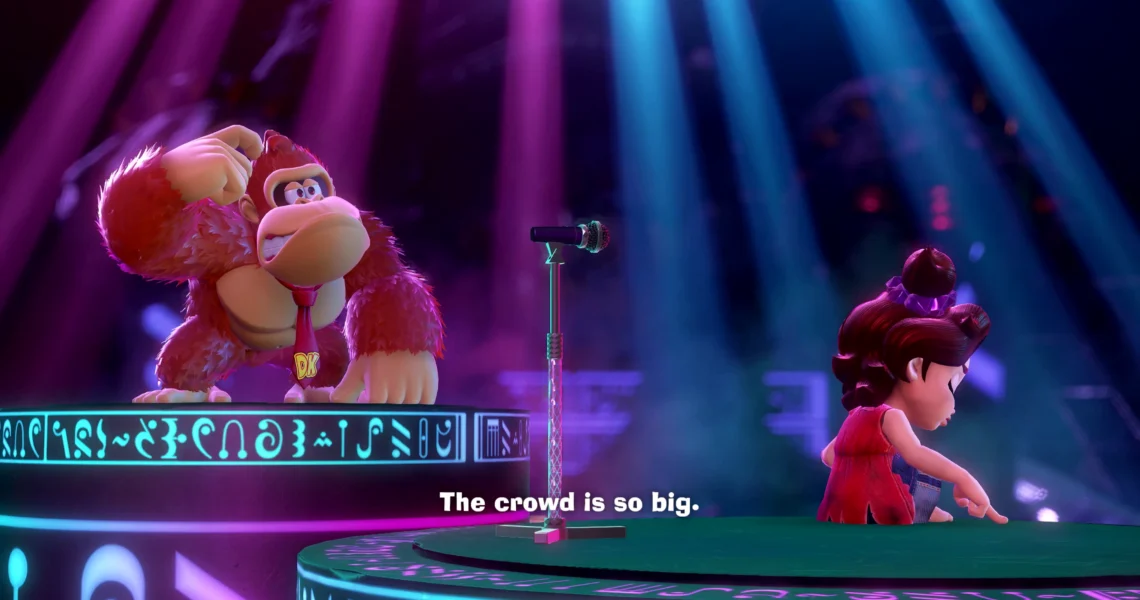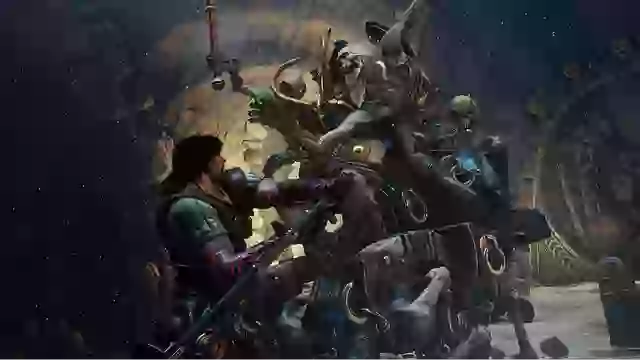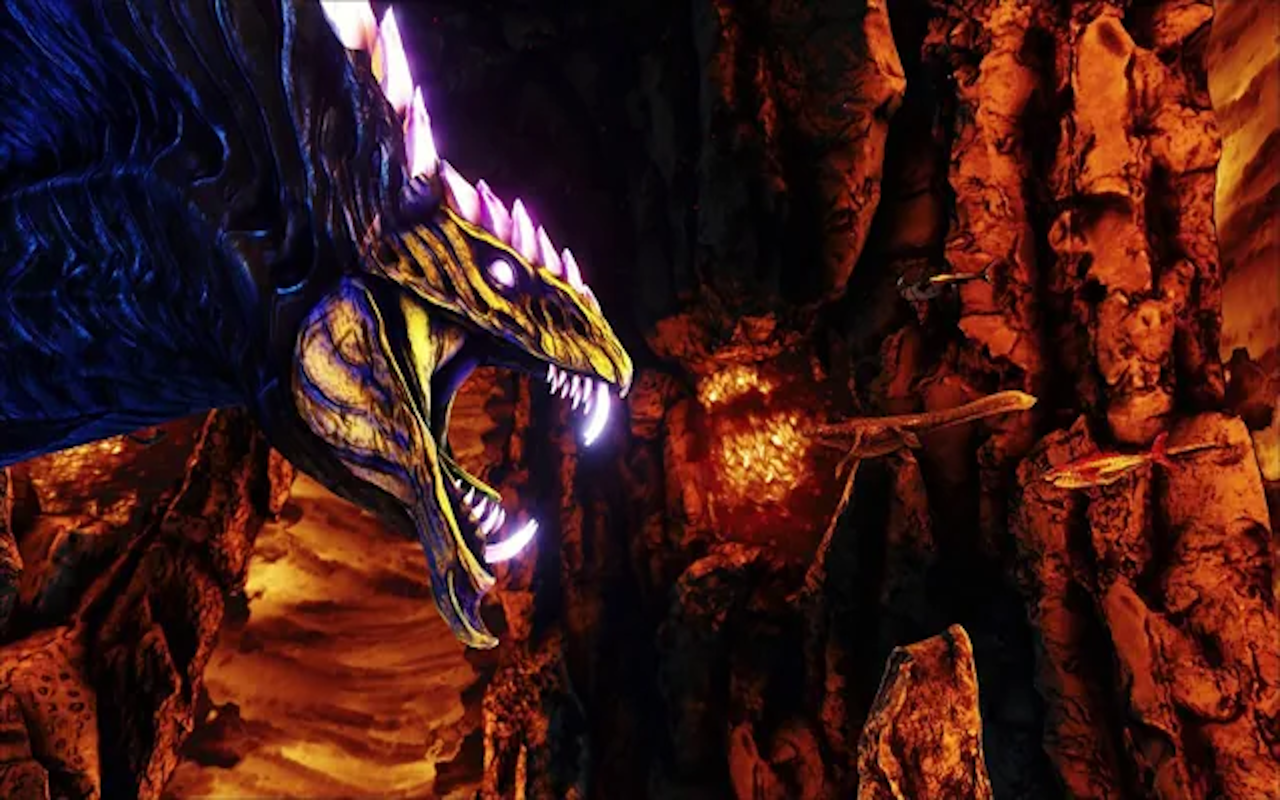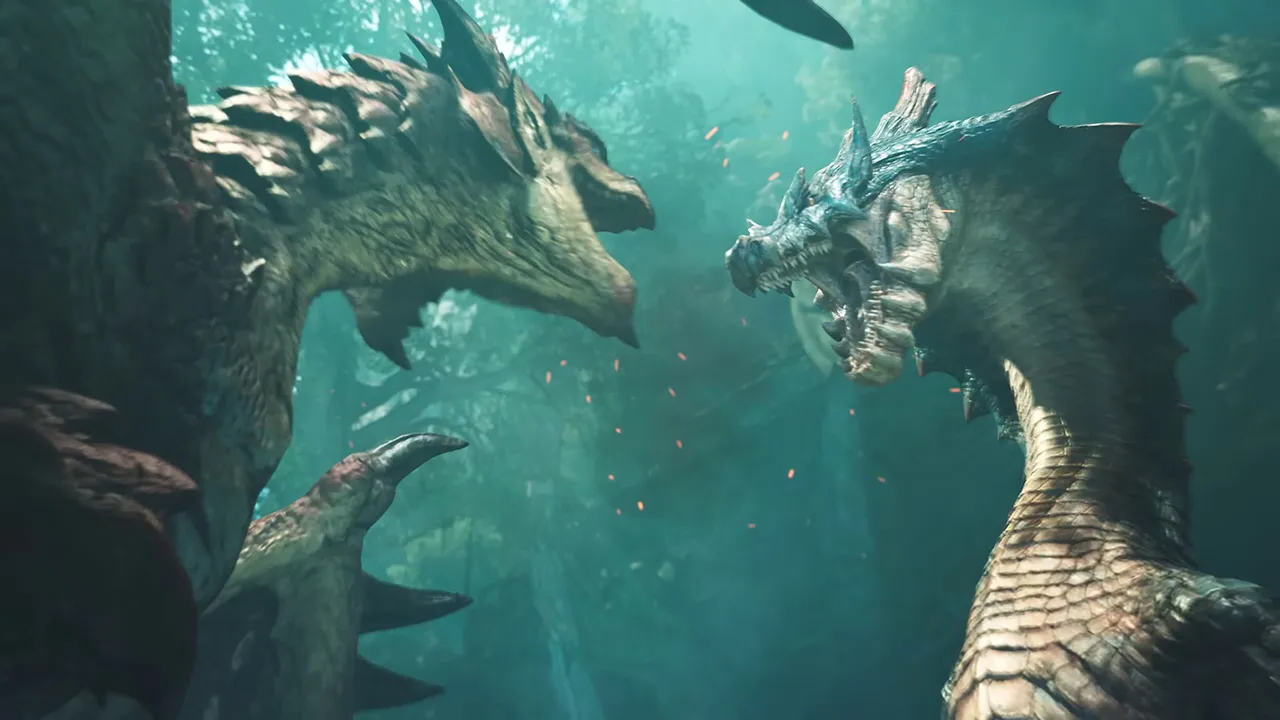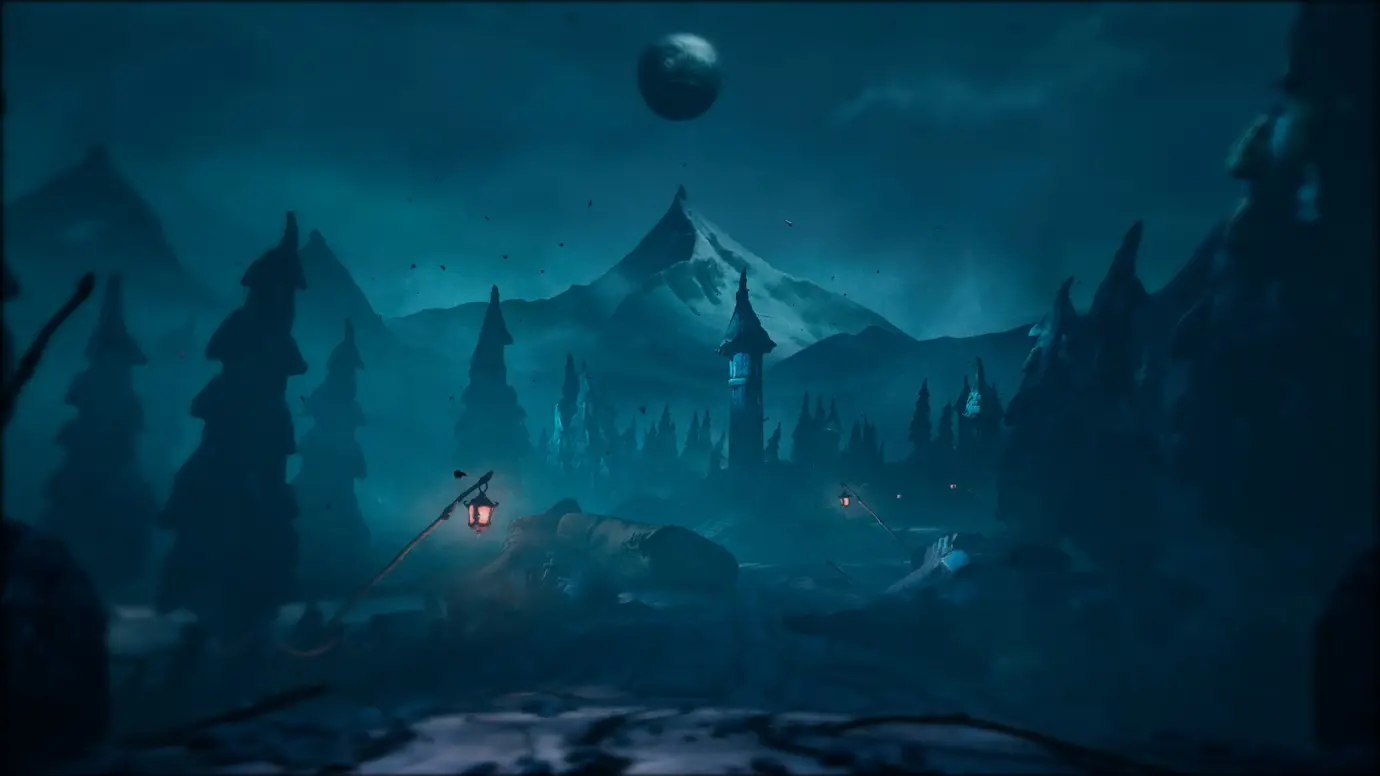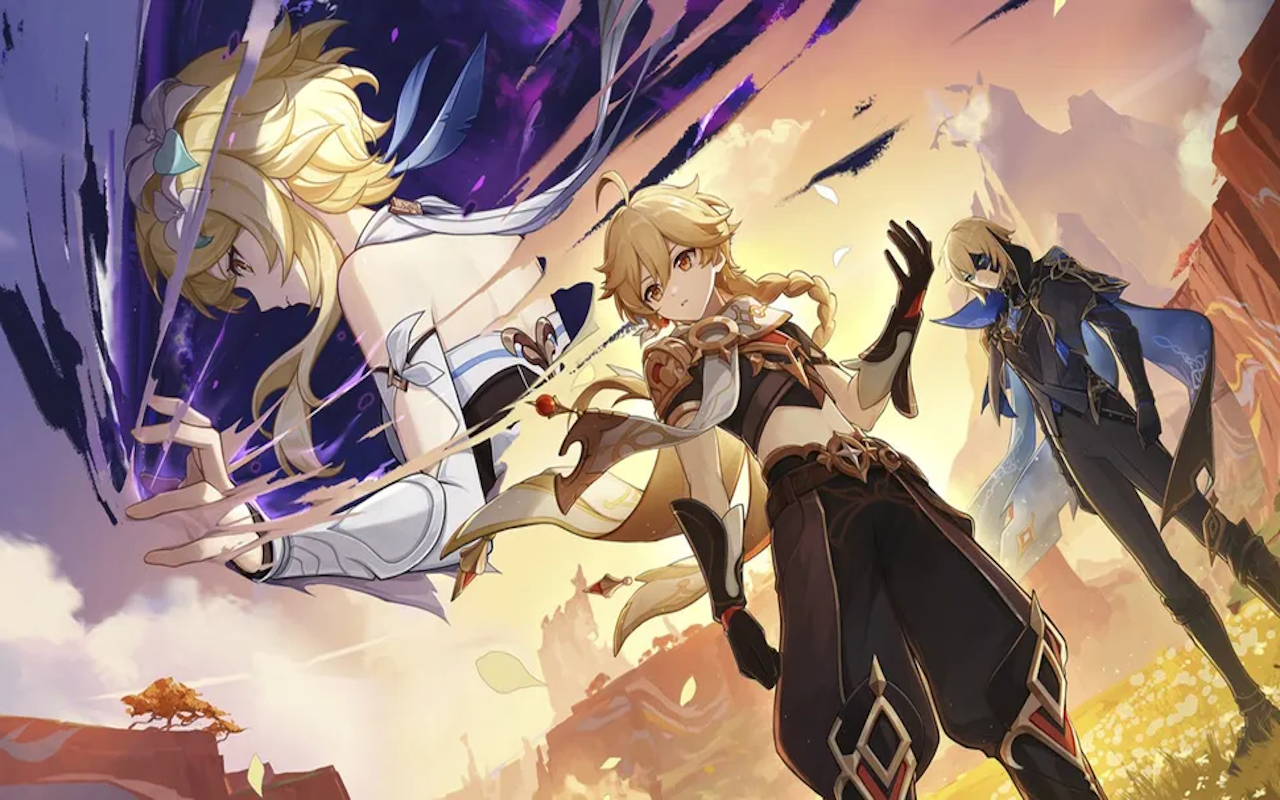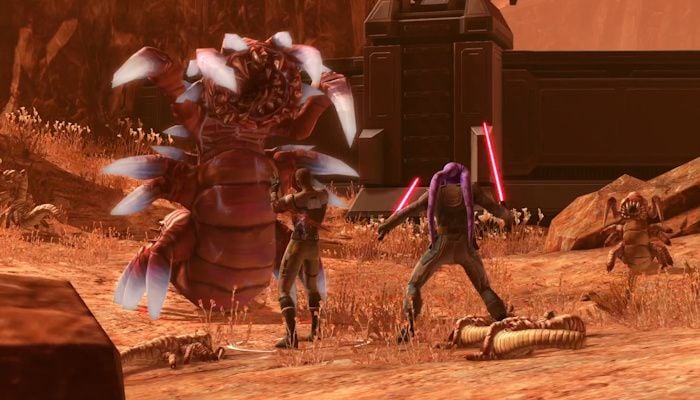Donkey Kong Bananza: A Groundbreaking 3D Platformer
Nintendo has a celebrated tradition of building each new 3D Mario game around a singular, revolutionary idea. Think of Super Mario Sunshine’s innovative water pack, or Super Mario Odyssey’s iconic body-snatching hat, Cappy.
In that same groundbreaking tradition, Donkey Kong Bananza introduces a concept perfectly suited for its hulking, rampaging gorilla protagonist: fully destructible environments. This exciting concept is truly “fit for a Kong,” as Mario, the Mushroom Kingdom’s usual leading man, is notably absent. Instead, this malleability of the world feels inherently natural and incredibly satisfying for Donkey Kong’s powerful physique and aggressive style.
Practically everything in this vibrant world is meticulously designed for Donkey Kong to punch and break. The sheer extent to which Bananza commits to letting players literally tear through its environment is both a technical marvel and an absolute blast to experience. It feels incredibly refreshing to play a Nintendo 3D platformer that offers an almost entirely new toolkit for interaction. Donkey Kong’s unique set of abilities is endlessly enjoyable and remarkably fulfilling to master and pull off. The core identity of Donkey Kong in Bananza is power, and this attribute is consistently and satisfyingly reflected across his entire moveset.
The seemingly simple action of tearing a chunk from the ground – an ability DK can unleash almost anywhere – immediately unlocks a multitude of dynamic gameplay possibilities. Once he has a chunk, DK can hurl it at airborne enemies with surprising precision, delivering powerful ranged attacks. He can swing it to break through sturdy walls, revealing hidden paths or secret areas. He can even bounce off it to gain extra height for a double jump, expanding his platforming repertoire. Alternatively, he can surf on it to quickly traverse terrain or safely cross dangerous obstacles like lava or spike pits, showcasing its versatility as a movement tool.
When DK is empty-handed, his abilities are no less impressive. He can punch powerfully in any direction, allowing for direct combat or environmental interaction. A signature move is his ground slap, which instantly gathers loose gold and cleverly reveals nearby collectibles, encouraging exploration and reward. He can also execute a highly satisfying roll-jump-roll combo, a fluid sequence that feels cut from the same cloth as Mario’s advanced Cappy maneuvers, allowing for impressive horizontal distance.
Moreover, taking a page directly from Link’s adventurous playbook, Donkey Kong possesses the ability to climb basically any non-slippery surface. This newfound verticality grants an exhilarating extra sense of freedom to the entire journey, allowing players to approach challenges and explore layers from various angles.
The immersive experience is further enhanced by crunchy sound effects that dynamically change based on the material DK is interacting with. This auditory feedback makes the act of destruction even more entertaining. The loud, satisfying crumble of breaking down a sturdy wall of stone provides visceral feedback, while the juicy splash of tearing into a watermelon adds a playful, tactile quality to the destruction. The controls for executing all these actions are incredibly polished and intuitive.
When players skillfully chain together a complex combo – for instance, tearing a chunk out of the ground, smacking it into an enemy to weaken them, and then slamming into it with a powerful roll to finish the job – every element of the gameplay sings together in perfect harmony, creating a fluid and deeply gratifying interactive experience. This meticulous attention to detail in DK’s movement and environmental interaction solidifies Bananza as a standout 3D platformer.
Layered Design: Exploration, Puzzles, and Smart Destruction
To slightly misquote a famous animated ogre, Donkey Kong Bananza is like an onion – its levels are brilliantly structured as “layers.” Each “layer” is a sprawling, multi-tiered playground, meticulously constructed to maximize the inherent potential of Donkey Kong’s destructive abilities. These vast environments are teeming with secrets, offering so much to find both on their exposed surfaces and cleverly tucked away in hidden caves and tunnels. These secret passages are predominantly uncovered by the satisfying act of bashing your way through the environment.
However, Bananza rarely relies on mindless destruction for its own sake. Players are almost never required to stumble onto random discoveries by simply “beating the snot out of everything.” Instead, the game truly excels at rewarding discoveries through “smart destruction.” It’s remarkable how intentional and exceptionally well-designed its dense, vertical layers truly are. The game masterfully employs visual cues that expertly draw your eye to specific areas worth exploring.
This design philosophy is reminiscent of how seasoned Zelda players instinctively know to place a bomb in front of any suspicious-looking crack in a wall, anticipating a hidden path. In Bananza, if you spot a tantalizing gold piece or a fossil embedded in a wall, the intelligent solution often involves chucking an explosive Boom Rock at it. Doing so has a very good chance of revealing a completely new path to explore, connecting previously inaccessible areas and fostering a strong sense of reward for keen observation and strategic destruction.
The open-world nature of these sprawling maps occasionally allows for delightful moments of serendipity. You might, for example, happen upon a collectible by cleverly skipping the intended puzzle entirely, instead carving a direct tunnel straight to it. In the natural course of play, however, this rarely happens so often that it trivializes the experience. Moreover, this design philosophy aligns perfectly with modern Nintendo trends, as seen in games like Tears of the Kingdom, where designers demonstrate a clear preference for player freedom. They often “don’t care how you get from point A to point B as long as you have fun doing it,” encouraging creative problem-solving.
On the other hand, there are intelligent limits to this newfound freedom. Bananza smartly walls off most of its main objectives behind terrain that the nefarious Void Kong has rendered indestructible. This ingenious design choice effectively “forces you to go through the proper steps of the story,” ensuring that DK cannot simply punch his way straight down to the end credits. This balance prevents the core narrative from being bypassed while still allowing for extensive environmental interaction elsewhere.
That said, the game’s malleable nature opens up exciting possibilities for the community. The reviewer eagerly anticipates how speedrunners will find innovative ways to optimize their routes through different levels, confidently predicting that “some crazy demolition techniques and shortcuts” are just waiting to be discovered by dedicated players. This blend of structured progression and player-driven exploration, facilitated by destructive mechanics, makes Bananza’s world feel incredibly alive and rewarding.
Core Gameplay Loop: More Than Just Wrecking
What’s truly fascinating about the meticulous design of Bananza’s world and its objectives is that the game is not solely, or even primarily, “about destroying everything.” Instead, it is fundamentally about exploring, platforming, fighting, and collecting within a vast and dynamic world where you can destroy almost anything. This is an incredibly important distinction that shapes the entire gameplay philosophy. The destruction mechanic never feels like a mere gimmick or the only tool at your disposal to solve every problem. Rather, it is seamlessly integrated as one integral part of Bananza’s larger, sophisticated game design philosophy.
Players are rarely asked to create random tunnels underground with no guidance, a common trope in sandbox games like Minecraft. Instead, the game provides intelligent support for exploration. Donkey Kong’s upgradeable sonar ability is a prime example, helping players find buried collectibles that are hidden to the naked eye, ensuring that hidden treasures feel discoverable rather than frustratingly obscure. Furthermore, Pauline, DK’s spirited sidekick, actively contributes to the search for secrets.
When her singing ability is activated, it reveals clear waypoints to collectibles marked directly on your in-game map, making it exceptionally easy to pick your next destination and maintain focus. This guidance keeps the extensive hunt for completion focused and fun, even if the game’s camera occasionally struggles with the unconventional angles players might force it into when digging themselves deep holes. Of course, for those who simply want to unleash chaos, the game fully supports the desire to “rip an entire level down to the studs for the fun of it.”
The act of romping around the sublevels, tirelessly hunting for treasure, is an absolute blast. It’s an impressive technical and design feat that despite the constant, fast-paced chaos unfolding on screen, the player consistently feels totally in control of the action. The world’s responsiveness to DK’s rampage is truly captivating: watching the terrain crumble dynamically around him when he’s on a rampage makes everything feel profoundly alive.
It powerfully sells the weight and heft of this character, creating moments like the way he leaves a satisfying crater when crash landing after a high jump off a cliff (and naturally, there’s no fall damage, encouraging daring maneuvers). To a certain extent, this dynamic interactivity has even made returning to past Mario games feel less dynamic and somewhat static in comparison – sparking questions like, “What do you mean Mario’s ground-pound doesn’t shatter the terrain around him?”
Pre-launch, there were some concerns among fans that the world’s malleable nature might lead to each layer feeling like a repetitive “palette swap” of one large underground region. Fortunately, this is emphatically not the case. Every world in Bananza has something genuinely unique to offer, both visually and mechanically, ensuring constant fresh engagement.
For example, the Freezer Layer presents unique challenges with its icicles, which players must strategically knock down to create temporary platforms, demanding environmental puzzle-solving. In contrast, the Resort Layer offers tropical vibes and introduces Liftoff Ore, a new material that sends DK soaring into the sky when a chunk of it is grabbed, opening up vertical exploration opportunities. This constant injection of novelty ensures that Bananza’s world remains engaging and surprising throughout its extensive campaign.
Innovation and Progression: Fresh Ideas Off The Vine
Donkey Kong Bananza never stops pulling fresh ideas right off the vine throughout its extensive 20-plus hours of main campaign gameplay, and well beyond into its post-game content. The reviewer was consistently stunned by the sheer ingenuity on display as they dove into some of the deeper, late-game layers of the Planet Core. The world itself is constructed from a multitude of different material types, each with its own specific properties and a set of defined rules governing how they interact with each other.
A simple yet brilliant example is how throwing ice onto lava instantly creates a hardened rock platform, allowing for traversal across hazardous zones. However, the chemistry and interplay between various elements become significantly more complex as players progress further into the game. Learning these intricate relationships and then skillfully applying that knowledge to solve increasingly smart and multi-layered puzzles is an experience that is supremely gratifying.
These engaging puzzles are often found within standalone challenge rooms, the entrances to which are cleverly scattered across each sprawling layer. These rooms offer a wonderfully curated mix of different gameplay types: intense fights against various enemy configurations, intricate logic puzzles that demand thoughtful application of DK’s abilities and environmental understanding, and precise platforming sequences that test player dexterity.
These challenges provide a welcome change of pace from the more open-ended, explorable layers themselves, maintaining freshness throughout the long playtime. The reviewer was consistently impressed with how these challenges ingeniously take full advantage of the intricate systems Nintendo built for Bananza, pushing players to think creatively about the game’s core mechanics.
Even after more than 50 hours of gameplay, the reviewer was still discovering new challenge rooms. These later challenges expertly mix and match various enemies, material types, and DK’s abilities in brand-new ways, ensuring a constant stream of fresh experiences. Some of the most brilliant examples include sections featuring blue and pink slime that are perfect inverses of each other. If a blue slime section is completely full, its pink counterpart is entirely empty; conversely, destroying part of the blue slime immediately fills in the matching part of the pink slime area.
Bananza builds several truly brilliant puzzles off this single, ingenious idea, demonstrating its capacity for profound design depth. The game gets similar mileage out of “every toy in its toybox,” constantly recontextualizing familiar mechanics. It is astonishing how frequently the reviewer discovered clever challenges that forced them to think about something they’d already seen before in a completely new and unexpected way, a hallmark of truly innovative game design.
Rewards and Collectibles: Driving Progression and Completion
In Bananza, the act of exploration is inherently gratifying, but it’s made even more compelling by the promise of great rewards for finding the game’s abundant heaps of collectibles. These treasures serve multiple purposes, driving player progression and providing satisfying incentives for thorough exploration.
Fossils, for instance, are a key collectible used to purchase region-specific outfits for both DK and Pauline. These outfits are not merely cosmetic; they often come with distinct perks that can alter gameplay, such as increasing your chances of finding treasure chests or providing other minor advantages. Beyond their practical benefits, simply giving DK and Pauline a fresh, new look is a fun and engaging aspect of customization. Players will also amass mountains of gold throughout their journey.
While the reviewer initially found themselves “swimming in cash” during the early hours, they eventually discovered that certain optional content runs your wallet dry. This clever design choice ensures that gold remains a valuable resource throughout the game, with a clear promise that “collecting as much gold as you can will be worth it in the end,” hinting at significant post-game investments or unlockables.
Of course, the paramount collectible in Bananza is its Banandium Gems. These are comparable to Super Mario Odyssey’s Power Moons in their plentiful distribution across the levels and their frequent placement in challenging-to-reach locations. However, Bananza diverges from Odyssey in a crucial way: the game does not require you to gather a certain number of Gems before moving onto the next area. Instead, the main story progression relies on its own linear set of objectives (which often reward you with Gems as part of their completion). This design choice means players aren’t forced into extensive grinding just to advance the narrative, providing a smoother main story path.
Crucially, collecting Banandium Gems serves a more direct and immediate purpose: gathering five Gems earns DK a skill point. These skill points can then be used to upgrade his health, enhance his moves, and unlock or improve his powerful Bananza transformations. While the skill tree might not offer radical changes to your playstyle, it provides a consistent sense of progression.
It’s reassuring to know that “grabbing a Gem is always working toward a specific short-term goal,” providing a tangible benefit beyond mere completionism. This stands in contrast to Odyssey’s Moons, which, after the main credits rolled, didn’t really serve a significant purpose other than unlocking a far-off final challenge or for the simple satisfaction of being a completionist.
There are an astronomical number of Gems to find in Bananza. The reviewer, after clearing the main story in 20 hours, had already found literally hundreds. They then spent an additional 30 hours collecting hundreds more, and still anticipate “double-digit hours left to reach 100% completion.” Going for 100% completion is acknowledged as a massive undertaking, but the reviewer’s enthusiasm is undimmed: “with how enjoyable Bananza is to play, I’m not slowing down until I’ve collected every last one.”
The game also significantly improves upon previous Nintendo titles in terms of tracking progress. Unlike Mario Kart World’s lackluster Free Roam map, it’s remarkably easy to track your progress this time, thanks to a helpful list of collected Gems in each layer and a truly cool 3D map that accurately reflects the current state of the terrain you’ve destroyed, providing clear visual feedback on your destructive journey.
Visuals, Performance, and Homage to History
Donkey Kong Bananza is an undeniable visual treat. The game genuinely looks great, boasting amazing, expressive animations for DK himself that perfectly convey his power and personality. The environments are equally impressive, featuring colorfully detailed landscapes, engaging NPCs (non-player characters), and creatively designed enemies. The game consistently pulls visual and thematic inspiration from throughout Donkey Kong’s rich history, delighting long-time fans with thoughtful references. For instance, the opening level is cleverly littered with fallen girders, a clear and charming nod to the original Donkey Kong arcade game.
Additionally, the inclusion of sidescrolling segments directly references classic Donkey Kong Country levels, immersing players in a familiar yet freshly rendered perspective. This even extends to the soundtrack, which features a lovely new arrangement of “Stickerbush Symphony,” a beloved tune that is just one highlight in Bananza’s overall awesome musical score. While this game is developed by the team behind 3D Mario, Bananza consistently pays deep respect to all of DK’s history. At times, it genuinely feels like a modern follow-up to Rare’s golden era from the SNES and N64, particularly with character designs like the friendly rocks with googly eyes, which look as if they were plucked directly from Banjo-Kazooie.
However, even with its stunning visuals and ambitious design, Bananza is not entirely without its technical imperfections. The game does occasionally suffer from minor framerate drops, particularly in specific scenarios. These dips can occur during the most chaotic moments of destruction, when an immense amount of beautiful chaos is happening on screen simultaneously, or when you first seamlessly transition and drop into a brand new level layer.
While the action generally maintains a solid 60 frames per second (fps), whether the console is docked for TV play or in handheld mode, it can briefly dip below that benchmark. It’s perhaps “not great that we’re already talking about performance issues on Nintendo’s brand new console” (presumably the rumored Switch 2), but thankfully, these occasional drops are never too noticeable or distracting for the overall gameplay experience. The ambitious scope of this fully interactable and destructible world, pushing the boundaries of what a Nintendo platformer can achieve, is widely seen as a worthwhile tradeoff for the occasional dropped frame. The sheer innovation and visual spectacle often make it easier to forgive these minor technical hiccups.
Bananza Transformations: Power-Ups and Puzzles
Some of the most visually flashy and mechanically impactful moments in Donkey Kong Bananza occur during DK’s Bananza transformations. These are a variety of powerful, time-limited states that Donkey Kong unlocks as he progresses deeper into the planet’s core, each granting him unique abilities. Each transformation introduces a distinct way to interact with the environment and overcome challenges.
Kong Bananza is essentially a souped-up, supercharged version of DK himself. In this formidable state, he gains the ability to disintegrate the harder materials that would normally require the use of an explosive Boom Rock to break through. This provides a direct and satisfying way to bypass certain obstacles or create new paths with sheer brute force.
Zebra Bananza, on the other hand, is entirely focused on speed. In this form, DK can effortlessly run over terrain that would normally crumble and collapse underneath his ordinary giant feet, allowing for rapid traversal across unstable ground. The Ostrich Bananza transformation grants DK the ability to glide through the air, opening up new vertical exploration possibilities and allowing him to cover vast distances or cross dangerous gaps with ease.
The character designs for each Bananza transformation are delightfully hilarious, adding a layer of charm and personality to these powerful forms. Furthermore, each transformation is accompanied by a catchy, distinct tune performed by Pauline, making the act of mutating into one of these fierce forms always a fun and rewarding experience. Critically, all the Bananza forms feel fully fleshed out and incredibly satisfying to control, providing distinct gameplay mechanics.
Even better, players can instantly swap between the different Bananza transformations when in the powered-up state, granting an impressive level of flexibility in how they choose to tackle various challenges and puzzles. This on-the-fly switching encourages experimentation and strategic thinking, allowing players to adapt their approach to any given situation.
However, if there’s a slight criticism to be leveled at the Bananza powers, it’s that sometimes they can be “too powerful.” In theory, access to Bananzas should be somewhat limited, as you can only enter a transformation if you have enough “Bananergy,” a meter that is filled by collecting gold. However, gold is so exceptionally plentiful throughout the game that players will pretty much always earn enough Bananergy to transform almost immediately after spending it.
This constant availability can occasionally trivialize otherwise interesting puzzles in the overworld. For example, if a Banandium Gem is surrounded by treacherous poison water, and the “intended” route involves carefully creating your own path using vines, a player can simply skip the entire challenge by effortlessly gliding to it as Ostrich Bananza.
Admittedly, this “skip” is still a legitimate solution that fits perfectly with Nintendo’s recent design philosophy of empowering players to find any creative answer that works. As seen in Tears of the Kingdom, where designers allowed convenient but potentially “boring” solutions like the hoverbike, Bananza also embraces player agency over rigid puzzle solutions. However, having such immense power so readily available can sometimes feel a bit “cheap” compared to the deep satisfaction of actually figuring out and executing a complex obstacle’s intended solution.
The reviewer noted that they were usually able to restrain themselves from constantly using the most streamlined options the Bananzas provided. But for players who struggled to resist relying on the highly convenient-but-less-engaging hoverbike in Tears of the Kingdom, the easily accessible Bananza powers could prove to be a “dangerous temptation,” potentially detracting from the challenge and ingenuity the game otherwise encourages.
Boss Battles and Post-Game: Challenge and Longevity
The sheer power afforded by the Bananza transformations also comes into play during the boss battles, which, while visually impressive and creatively designed, are generally “pretty easy for the most part.” The game’s decision to equip its main antagonists with a traditional health bar, rather than adhering to the classic “expose the weak spot, hit it, and repeat three times” Mario template, fits perfectly with Donkey Kong’s brawler-focused style.
This allows for more direct, aggressive combat. However, thanks to the overwhelming utility of the Bananza powers, the reviewer noted that they often defeated some of newcomer Grumpy Kong’s earlier creations in less than 30 seconds, a testament to the transformations’ overwhelming strength.
The bosses all boast exciting and creative designs and are “very fun to look at,” such as a giant stone squid composed of dozens of smaller squids, which feels clearly inspired by Nintendo’s own Splatoon series. Despite their visual appeal, the reviewer expressed a desire for them to “have been able to take a few more punches before being ground into the dirt,” wishing for more prolonged and challenging encounters.
That said, the game does eventually “right the ship” in this regard: some of the late-game bosses put up a significantly tougher fight, incorporating more complex patterns and demanding greater strategic use of DK’s abilities, leading to fewer complaints on that front by the end of the campaign.
Even with some easier boss encounters, it remains fairly simple to reach the end credits of Bananza if that is the player’s sole objective. As is often the case with many Nintendo games, much of the true enjoyment and lasting appeal comes not from white-knuckle difficulty, but from the constant sense of surprise, delight, and the intrinsic pleasure of poking around for secrets.
This is not a criticism, given how absolutely fantastic the core mechanics are and the sheer volume of optional challenges Bananza presents off the beaten path for veteran players. For instance, the numerous platform challenge rooms, scattered throughout the layers, each hold three Banandium Gems within. One Gem is typically not too difficult to reach, but the other two are frequently hidden in shrewd, ingenious places that require keen observation and clever use of DK’s abilities to spot and acquire. This design strikes a great balance, ensuring that “most people should be able to get to the end of the story” without undue frustration.
For players seeking further accessibility, there’s an optional Assist Mode that increases DK’s health if needed, providing a welcoming hand to less experienced players. Additionally, a two-player mode is integrated, making it “great for letting younger players help out” by controlling Pauline, who can fire vocal projectiles using the Switch 2 Joy-Con’s rumored mouse controls, fostering cooperative play. Crucially, the game offers plenty to keep hardcore fans entertained long after the credits roll.
The true test of skill and mastery, and where “the gloves truly come off,” is during the post-game content. This expansive section continues to push the game’s innovative mechanics in more extreme and exciting ways, introducing greater challenges, new secrets, and deeper layers of complexity, ensuring that even the most dedicated players will find ample reasons to keep exploring, destroying, and conquering the world of Donkey Kong Bananza for dozens of hours beyond the main story.
